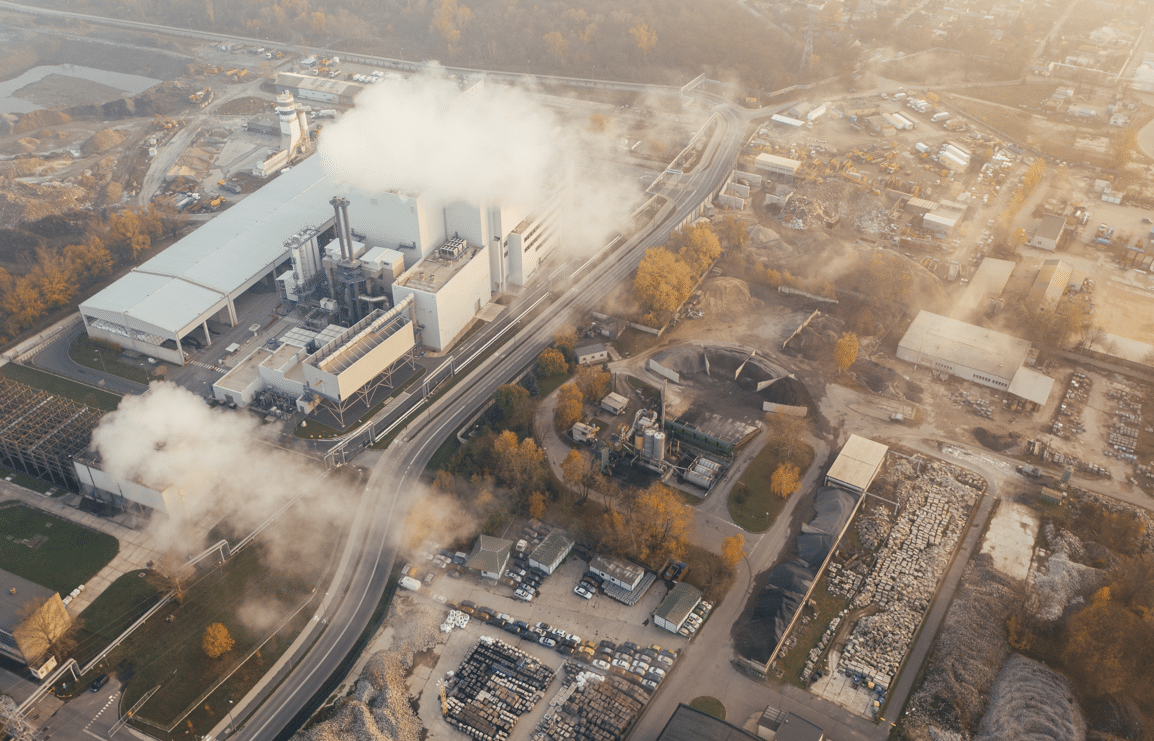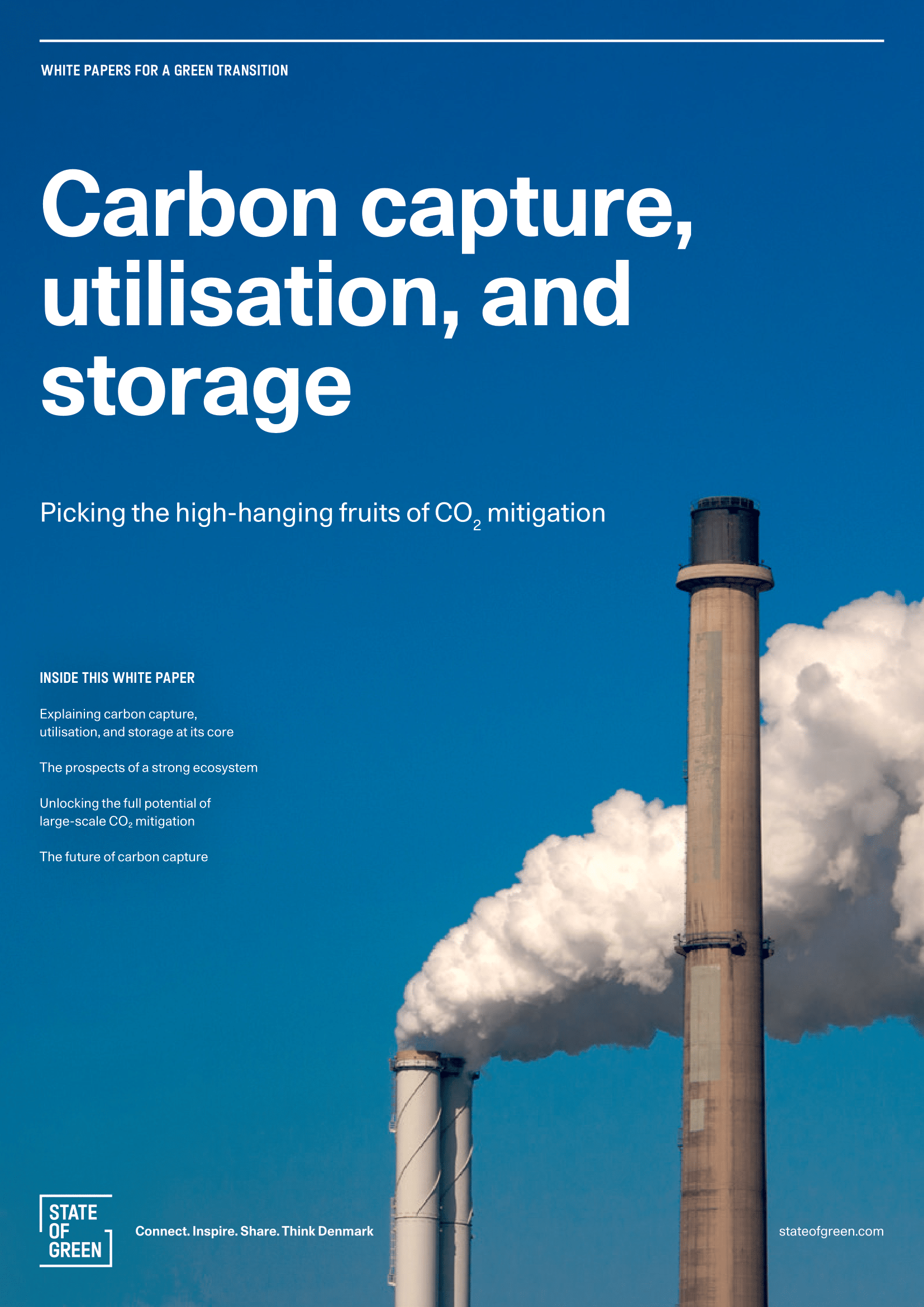White paper: Carbon, capture, utilisation, and storage
Wish to learn more about how Danish initiatives within carbon capture, utilisation and storage? Download our white paper.
Download nowNews
Air pollution from industry production
Green buildings
Industrial symbiosis
+1



Wish to learn more about how Danish initiatives within carbon capture, utilisation and storage? Download our white paper.
Download nowThrough an EUDP-supported project, Amager ressource center (ARC), together with the Technical University of Denmark (DTU), Pentair, and Rambøll, are investigating how carbon capture is best connected to waste incineration, and whether it can be made energy-neutral by using heat energy from the process for district heating.
Carbon capture is particularly interesting in relation to energy utilisation of waste, as it is possible to capture large amounts of biogenic CO2, whereby a plant can help to actively lower the total amount of CO2 in the atmosphere. About two-thirds of the CO2 discharge from Amager Bakke consists of biogenic CO2.
The 14th of August marks a new milestone in Danish history. In collaboration with the Minister for Climate, Energy, and Supply, Lars Aagaard, and Lord Mayor of Copenhagen, Sophie Hæstorp Andersen, ARC is inaugurating their demonstration plant for carbon capture.
“Here, carbon capture from the energy utilisation of waste, which is used to cultivate tomatoes, serves as an example of how innovation enables us to accomplish multiple objectives at once. My hope is that with the experiences gained from this new demonstration plant, we can proceed to establish a full-scale facility capable of capturing CO2 equivalent to a year’s emissions from nearly 300,000 cars,” says Sophie Hæstorp Andersen, Lord Mayor of Copenhagen.
ARC’s Chairman of the board, Marcus Vesterager, emphasises the potential of how it will now be possible to utilise the captured CO2 from the demonstration plant.
“We have proven that we can capture CO2 from our chimney. This is incredibly important for the following step, as we now illustrate that it is actually possible to utilise the captured CO2,” Vestager says, and continues: “With the demonstration plant, we are making Danish history, when CO2, for the first time, is captured from the flue gas of a waste-to-energy plant, pressurised, cooled, and then turned into a liquid to be used at the Østervang horticulture in Zealand.”
Related news: Capturing CO₂ from energy-efficient emitters
The challenge of connecting carbon capture for a waste-to-energy plant is that there are many variations in the composition of the flue gas which stem from energy utilisation of waste, as the waste brought to the plant is varied. This means that a carbon capture plant connected to waste energy must be able to handle changes without affecting efficiency.
Behind the demonstration plant stands the company, Pentair, which specialises in sustainable water solutions.
“The facility at ARC is built upon Pentair’s many years of experience with carbon capture and is the most advanced and proven technology on the market. The purpose of the demonstration plant is to clarify how a future tailored full-scale plant can be adapted to the operating conditions at the ARC, and the district heating network in the capital,” explains Henrik Lyhne, Global Sales Leader at Pentair.
In connection with the construction of the demonstration plant, ARC has entered into an agreement with Linde Gas, which supplies industrial gases to large parts of the industry in Denmark, as well as abroad. The captured CO2 on Amager Bakke is of food grade quality, and must be used specifically for cultivating vegetables such as tomatoes and cucumbers at Østervang, Zealand, which is one of the country’s largest horticultures.
This showcases a coherent value chain for carbon capture while making a contribution to new knowledge. It is an important step on the way towards ARC’s ultimate goal of capturing CO2 on a full scale, with the potential to contribute to a significant CO2 reduction of up to 500.000 tonnes per year.
The trials on a small pilot plant in 2021 were very promising in terms of the efficiency of capture. A decision has therefore been made to continue them. In 2023, we plan to build a larger demonstration plant with a capacity of 160 kg per hour. The plant is designed to verify the results obtained from the pilot plant. Fewer solvents will be tested, but they have to remain in the plant for a longer period. How a simulated connection to the district heating network will affect carbon capture will also be studied. Captured CO2 must be pressurised and condensed into a liquid that will be used for various practical purposes.
Learn more about the project at: Demonstration plant for carbon capture 2023
publications
Energy efficiency in industry
+7
Perspective
Sector coupling
+9